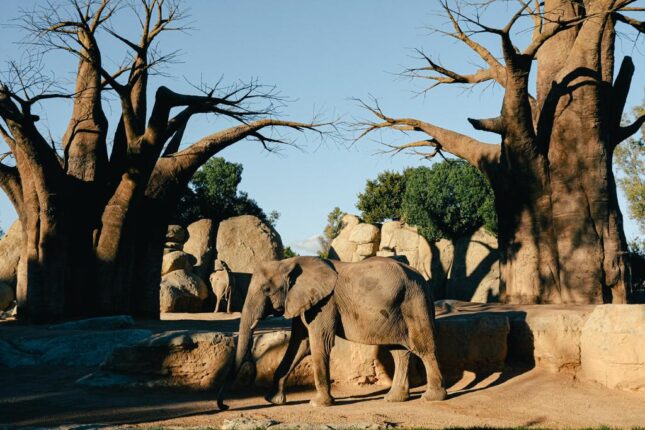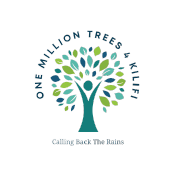
Introduction
In the heart of Kilifi County, Kenya, stands an ancient and majestic sentinel of time: the Baobab tree. Its gnarled and weathered trunk, towering over the landscape, holds within it the history, myths, and livelihoods of the local communities. This article explores the origin, lifespan, myths, uses, importance, and threats associated with the Baobab tree in Kilifi County. Furthermore, it delves into the increasing exportation of these remarkable trees, its potential dangers, the importance of educating the community, and the urgent need for conservation measures.
Origin and Longevity
The Baobab tree (Adansonia digitata) has its roots deeply intertwined with African soil and history. The word baobab is derived from the Arabic bu hobab meaning “fruit with many seeds” . Native to the continent, these iconic trees have stood witness to centuries of change. The tree can hold 4500litres of water and the trunk can provide shelter for as many as 50 people. Known for their unique appearance – with thick trunks and spindly branches that resemble roots reaching for the sky – Baobabs can live for thousands of years. Some specimens are believed to be over 6,000 years old, making them some of the oldest living organisms on Earth.
Myths and Cultural Significance
In Kilifi County from Shaka Adu to Chonyi all the way to Rabai, Baobab trees are more than just botanical marvels; they are symbols of cultural heritage and ancient wisdom. Local myths attribute supernatural powers to these trees, believing that they house spirits and supernatural beings. The trees are often used as gathering places for community meetings and traditional ceremonies, fostering a deep connection between people and nature. In the midst of drought, the elders could gather around a bigger Baobab tree and pray to call back the rains.
Uses by Ancestors
Baobabs have been integral to the lives of Mijikenda community for generations. The trees provided shelter, food, and medicinal resources. The fibrous bark was used for crafting textiles, ropes, and baskets. The bank heals colds, fever and influenza, a decoction made from the fresh bark is taken as a beverage for one week to treat the flue. while the leaves and fruit offered sustenance and medicinal properties. Baobab fruit rich in vitamin C and antioxidants, was often ground into powder to make nutritious drinks and porridge. The fruit can is also prepared to have the famous “Mabuyu” which is mostly sold along the Malindi and Kilifi beaches and in major bus stations for those who are travelling.
Community Importance
The Baobab tree’s significance extends beyond its practical uses. It plays a pivotal role in ecosystem health by providing habitat and sustenance for various species. Just close to Baobab Restaurant in Malindi we have a gigantic Baobab tree standing beside it. Early in the morning you will find hundreds of birds lingering on it. The birds patiently wait for sun rays to hit them and go looking for the fish left offers left by the fisher men at the fisheriess.
The Mbuyu tree shade offers becomes a refuge for both humans and wildlife, promoting biodiversity and supporting a delicate ecological balance. Moreover, the Baobab tree’s cultural role helps maintain a sense of identity and belonging within the community.
After emance deforestation which took place in areas of Magarini and Ganze. The Baobab tree is the only untouched species which stood against the odds without being cut. This the only species which increases the forest cover of Kilifi without being tempered by.
Exportation and Its Consequences
However, the global demand for Baobab products, including its fruit, oil, and bark, has led to increased exportation. These products are sought after for their purported health benefits and their potential use in the cosmetic and food industries. While this exportation can provide economic opportunities, it poses a significant threat to Kilifi County’s Baobab trees and the ecosystems they support. With the new established Botanical garden in Georgia. We have seen eight fully-grown Baobabs approximately 300 years old being uprooted loaded to cargo ships and exported. Is Baobab exportation the “World Coin” for Kilifi County? It should be remembered that not long ago the country lost the patent rights to the famous “Kiondo” yet it originated from Kenya. Without re-looking on the terms and conditions of this deal the same thing is likely to happen. Losing the patent rights to Baobab and its product.
Dangers to Kilifi County
Unregulated and unsustainable harvesting can lead to the depletion of Baobab populations, disrupting local ecosystems and cultures. The loss of these ancient trees could destabilize the environment, impact wildlife, and erode the cultural fabric of the community. Moreover, overexploitation may lead to soil erosion, as Baobabs play a crucial role in stabilizing the landscape. The future generation may read stories of the Baobab tree just like the ones we read about Dinosaurs. One old man said, “It’s quite sorrowful to see our worship places being loaded onto very huge vessels and transported to far places never to be seen again”
Educating the Community and Conservation
Raising awareness about the importance of Baobab trees is paramount. As onemilliontrees4kilifi we have Community education initiatives that emphasize on the ecological, cultural, and economic significance of these trees. Highlighting their role in attracting rainfall, as believed by local tradition. Also through collaboration with the elders, we are able to educate the community on the importance of protecting it’s heritage.

Addressing Poverty and Conservation
In my many years of planting trees and preaching the message of conservation within my community. I came to realize that it goes beyond the message of environmental conservation. We are dealing with a community situated in a region that receives minimal rainfall per year which is not regular. This puts the community at a crossroads when offered the market for selling the Baobab tree. Imagining of some who have not had a meal for some days, no drinking water, and no school fees for school-going children. When offered a package of 300 dollars for a tree they didn’t plant, then it goes without saying that, the offer is welcomed wholeheartedly. Poverty often drives the exportation of Baobab products, as communities seek economic opportunities to improve their quality of life. To counter this, sustainable harvesting practices and value-added processing within the local community can provide a balanced approach that benefits both the environment and the people.

Endangerment and Conservation Status
Recognizing the urgency of the situation, The Ministry of Environment and Forestry should ensure that exporters have the proper license to take the trees out of Kenya under the Convention on Biodiversity and the Nagoya protocol. These international agreements govern the conditions for the export of genetic resources, which have been incorporated into Kenyan law.
The County Government of Kilifi in conjunction with the Ministry of Environment and Forestry, Kenya Forest Service (KFS), Kenya Plant Health Inspectorate Service (KEPHIS), National Environment Management Authority (NEMA) and the Attorney General through the International Union For Conservation of Nature (IUCN) list the Baobab as an endangered and protected species.This will ensure that the Baobab appears in the appendices of the Convention on International Trade in Endangered Species of Wild Fauna and Flora (Cites). Ultimately this will protect the remarkable trees for future generations.
Conclusion
The Baobab tree stands as a testament to time, tradition, and the delicate dance between humanity and nature. In Kilifi County, these ancient sentinels are not merely trees; they are the embodiment of culture, history, and ecological equilibrium. Preserving the Baobab tree is not only an environmental imperative but also a safeguard for the rich heritage of Kilifi County and Mijikenda community. Through education, sustainable practices, and conservation efforts, these trees can continue to thrive, providing sustenance, shade, and stories for generations to come.

